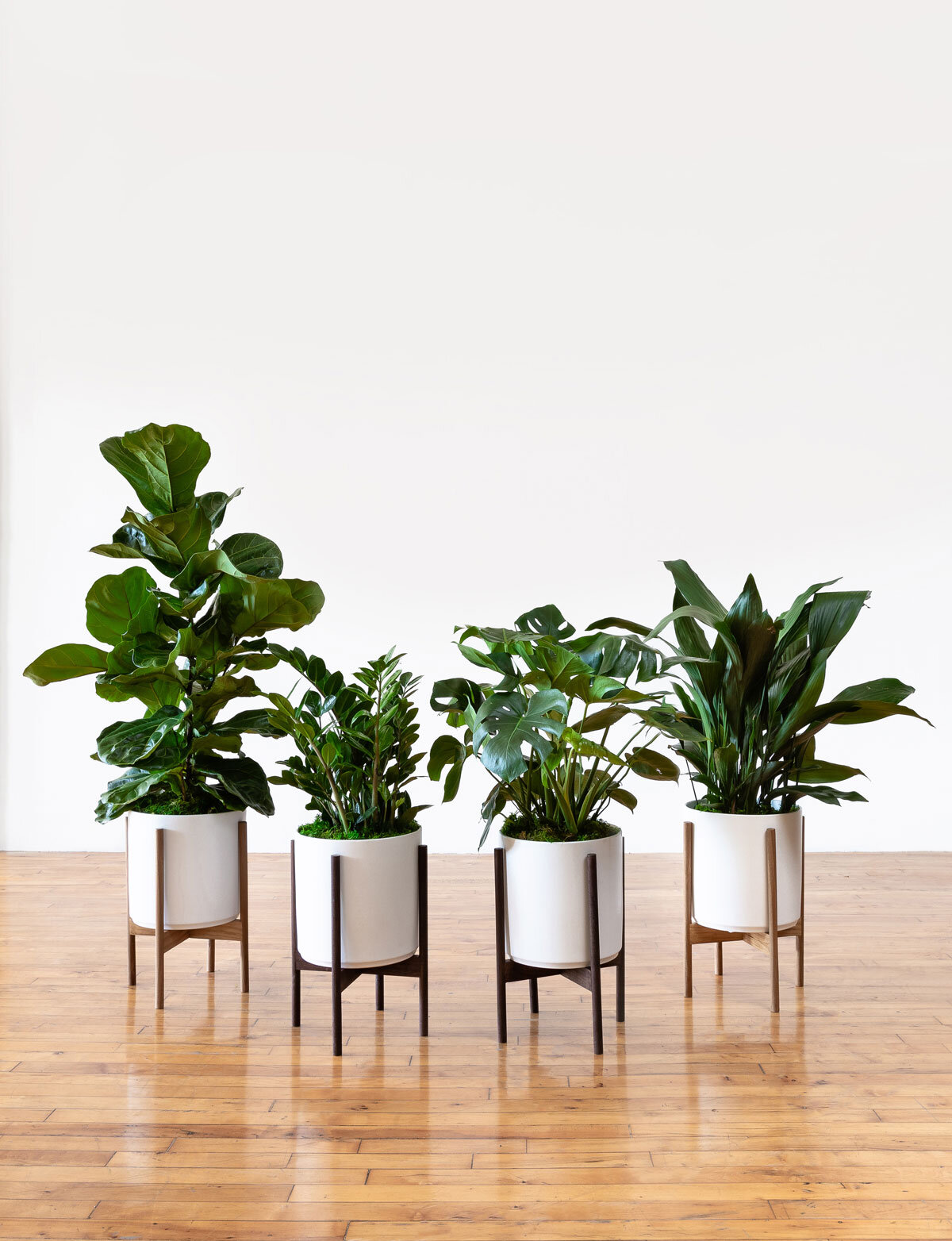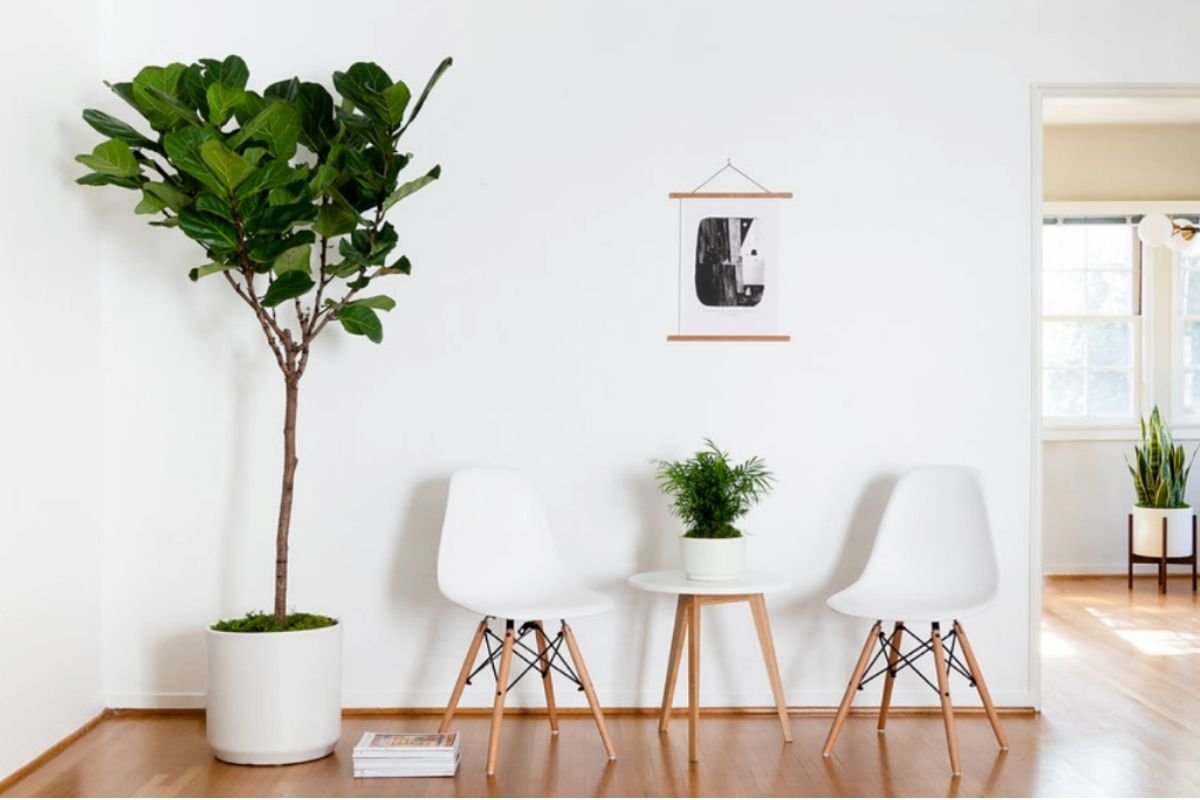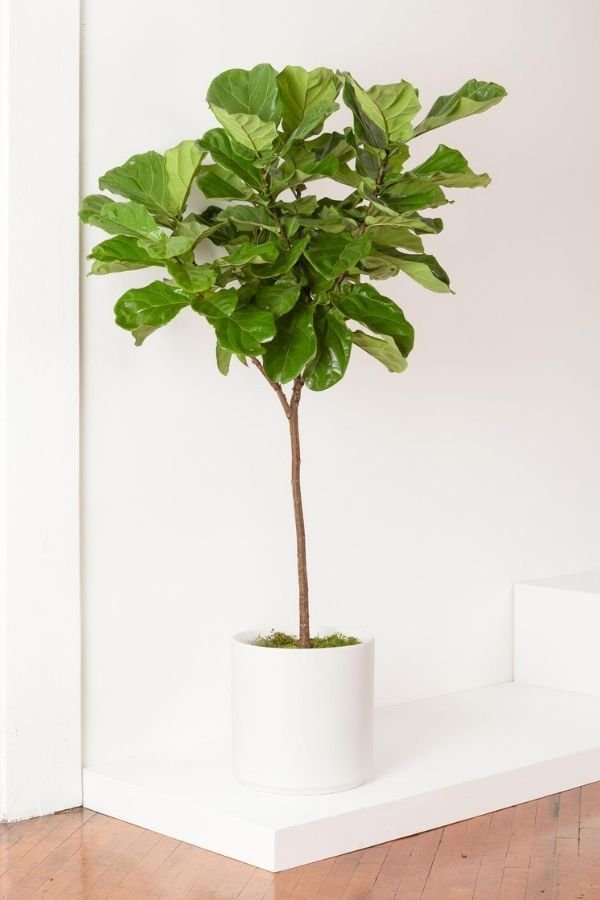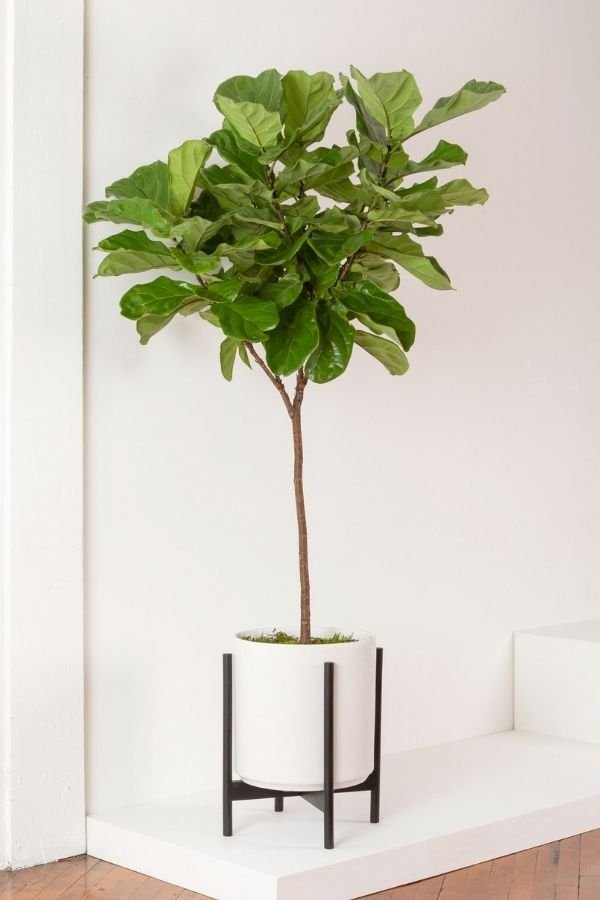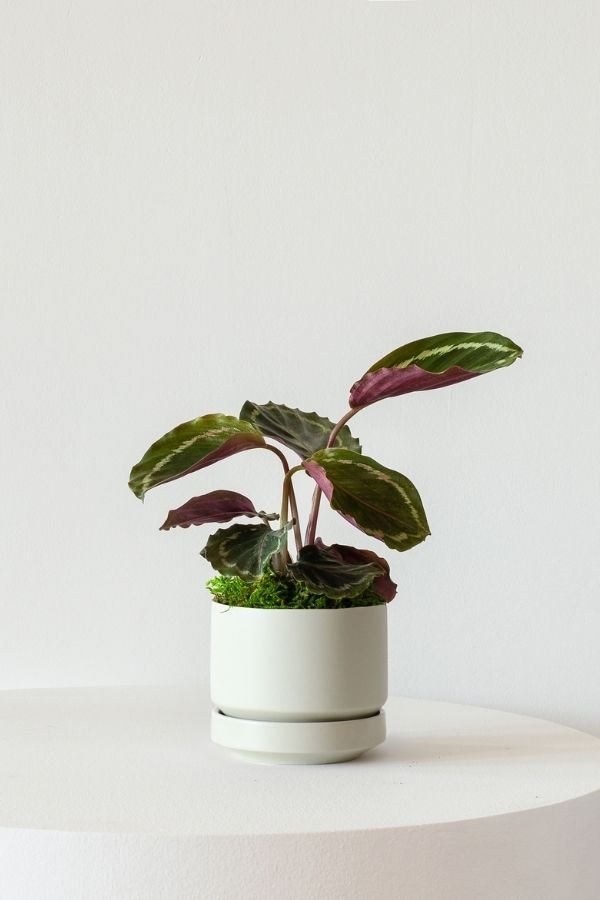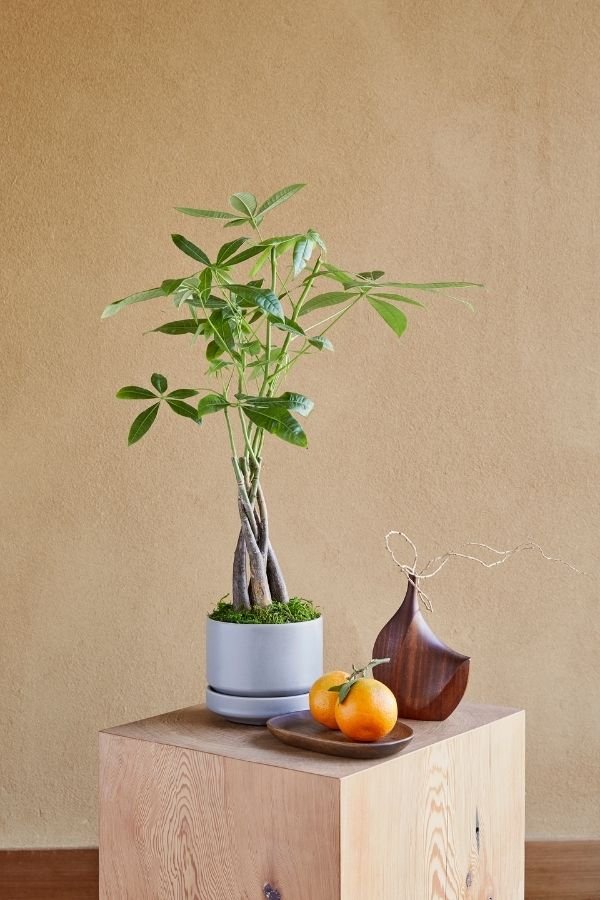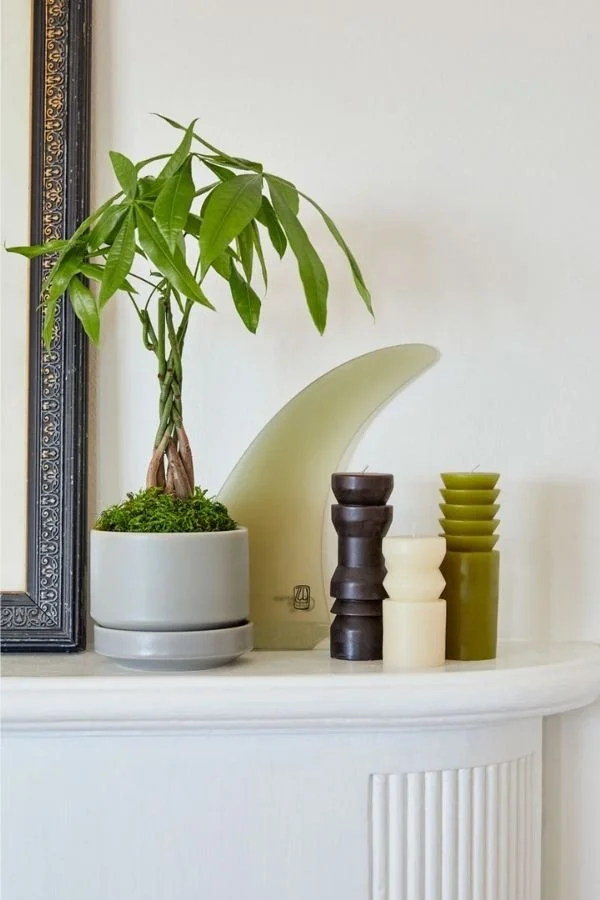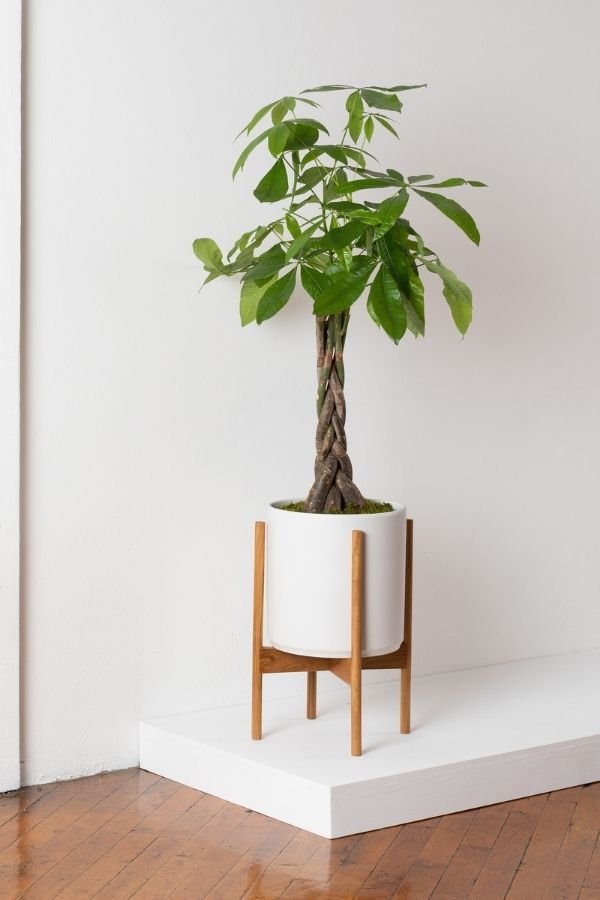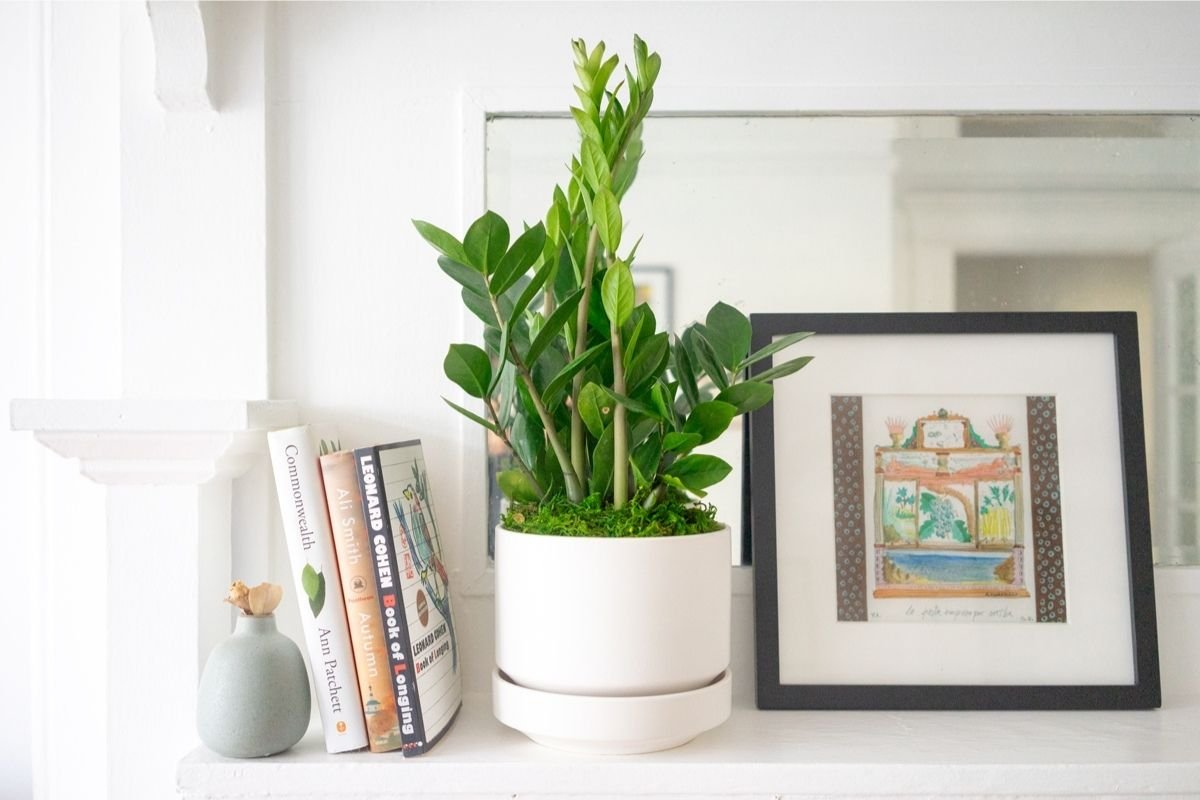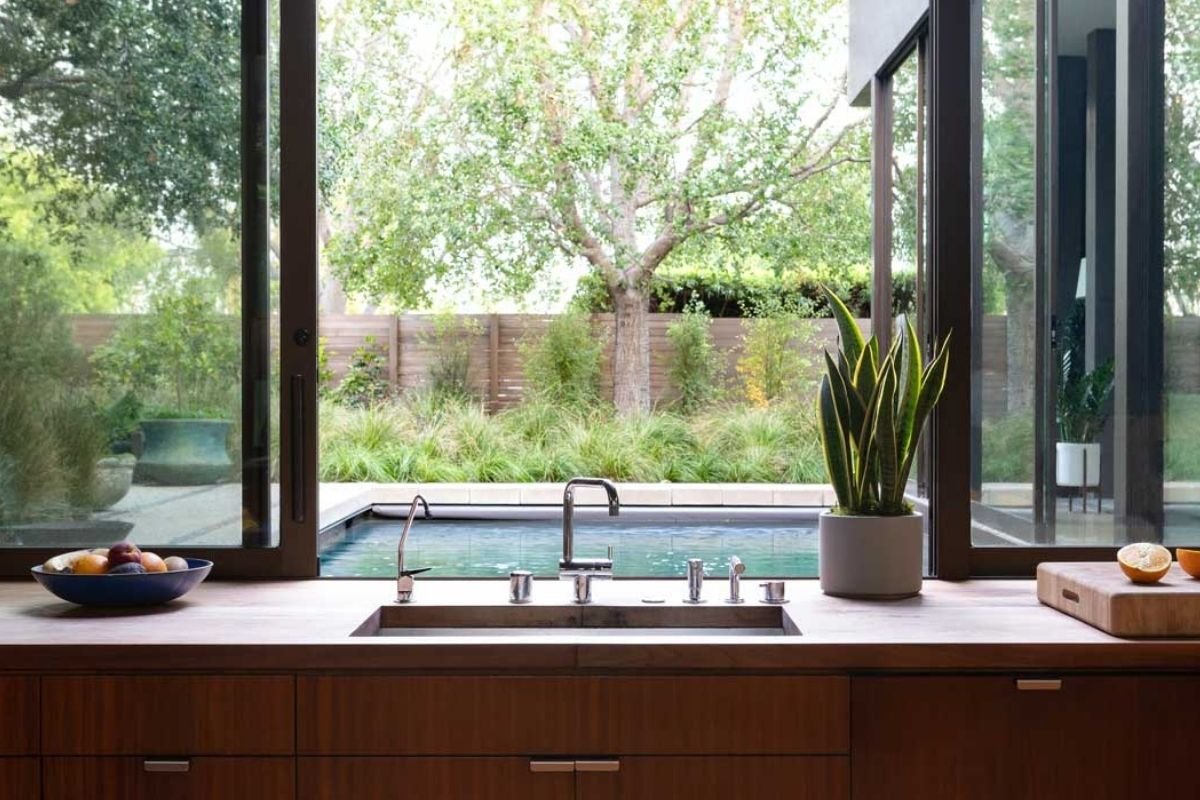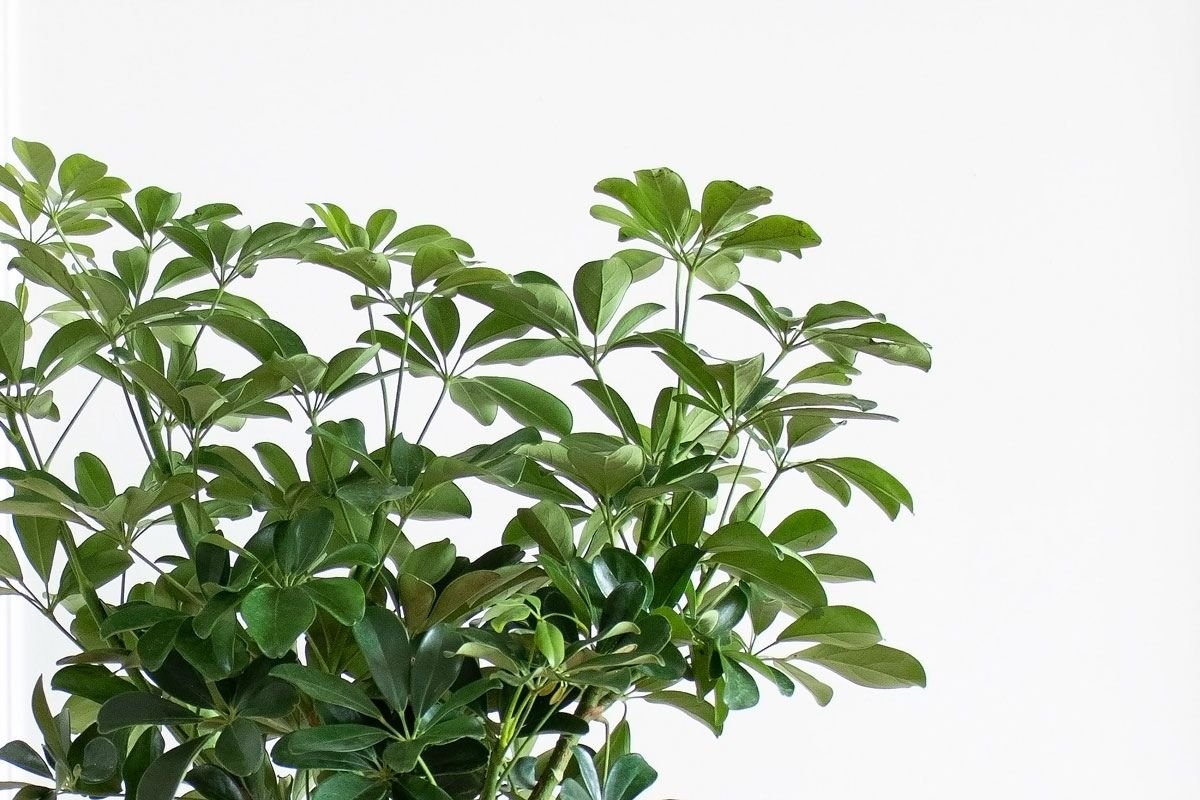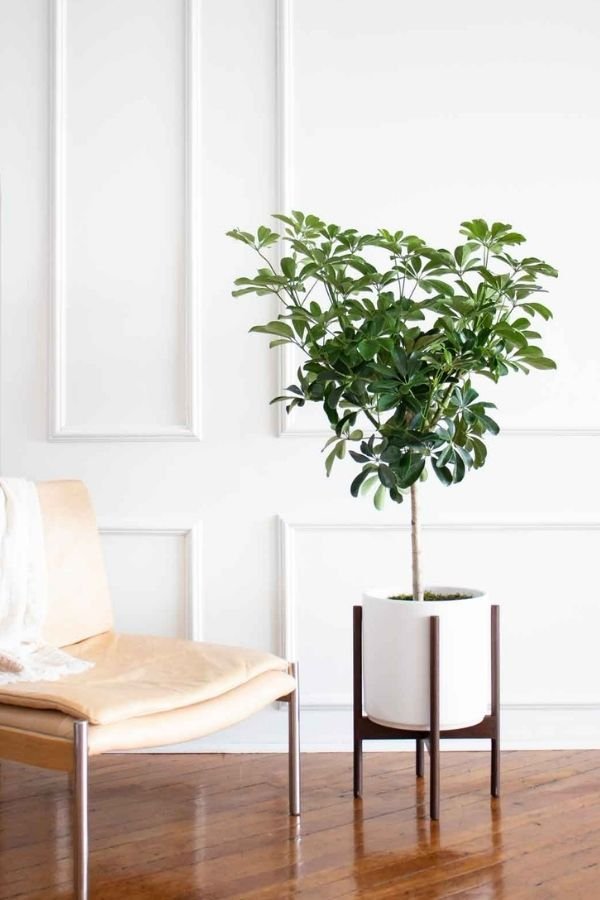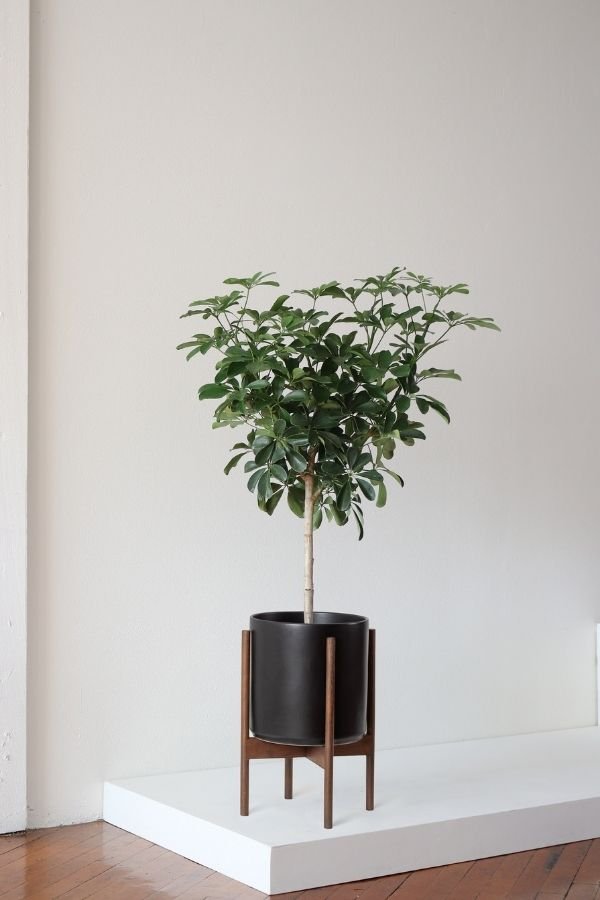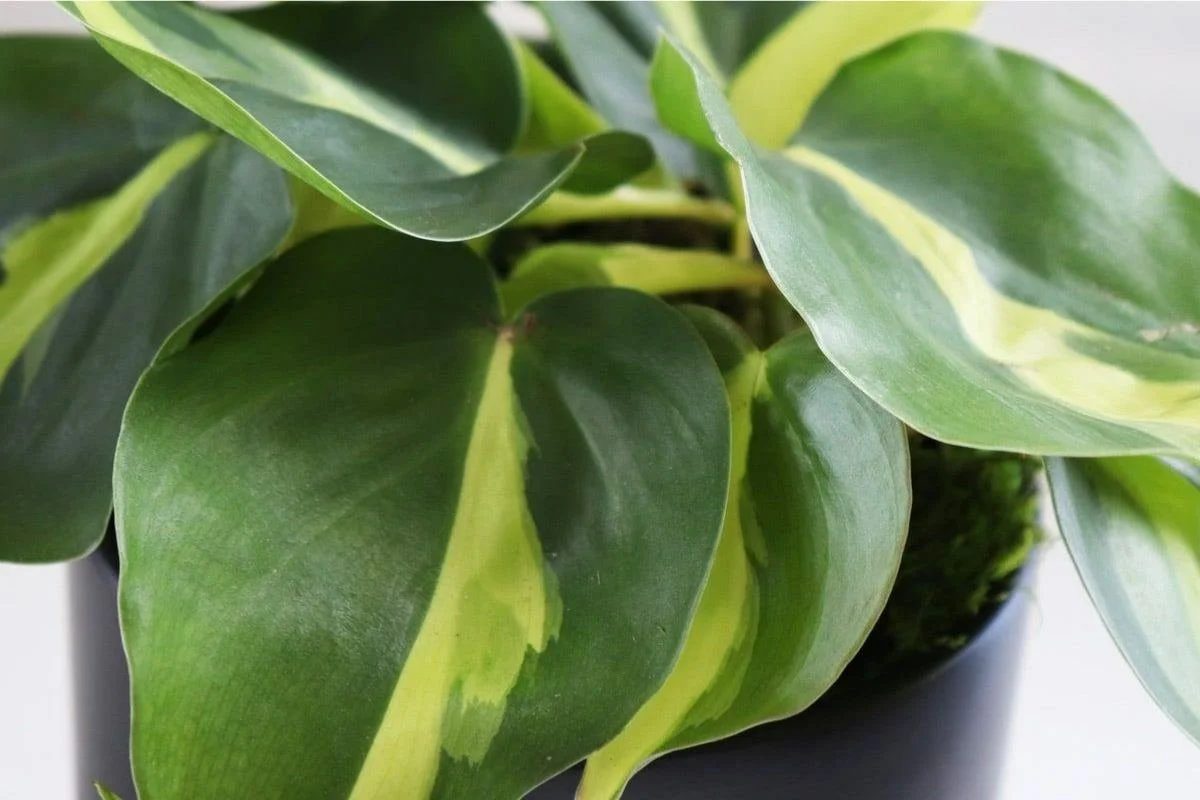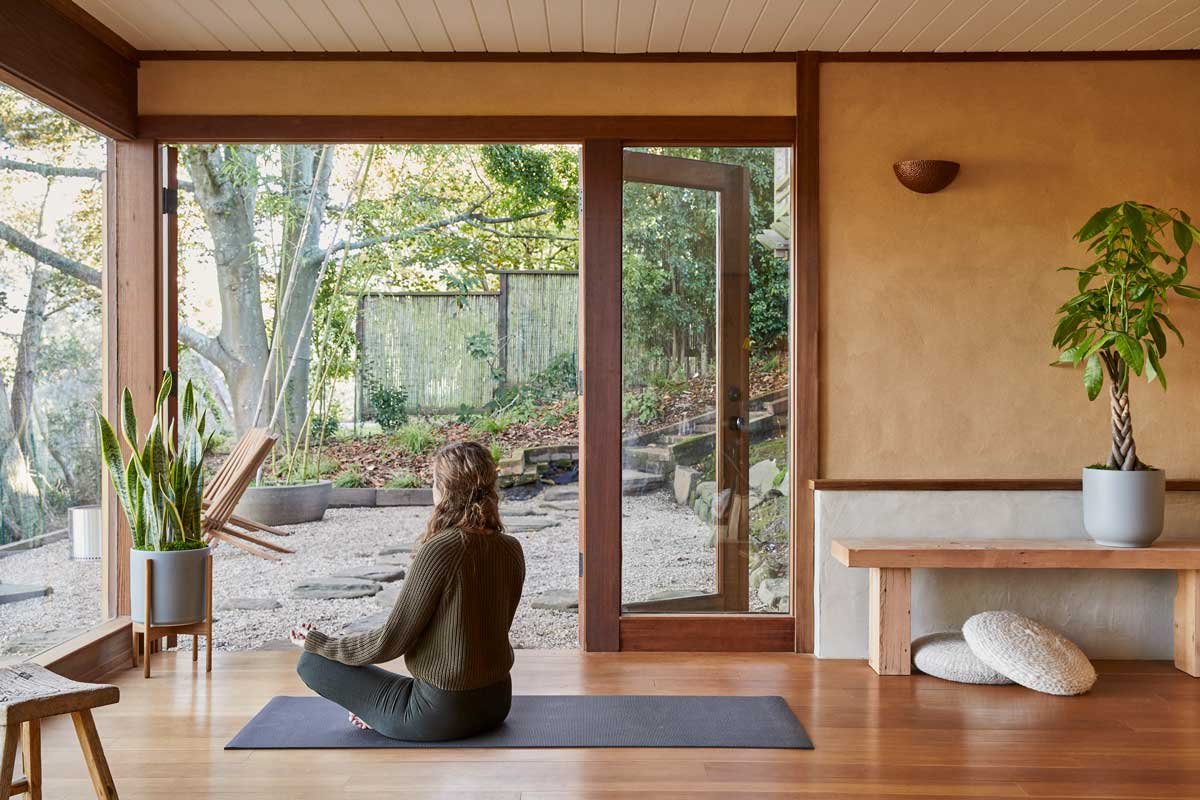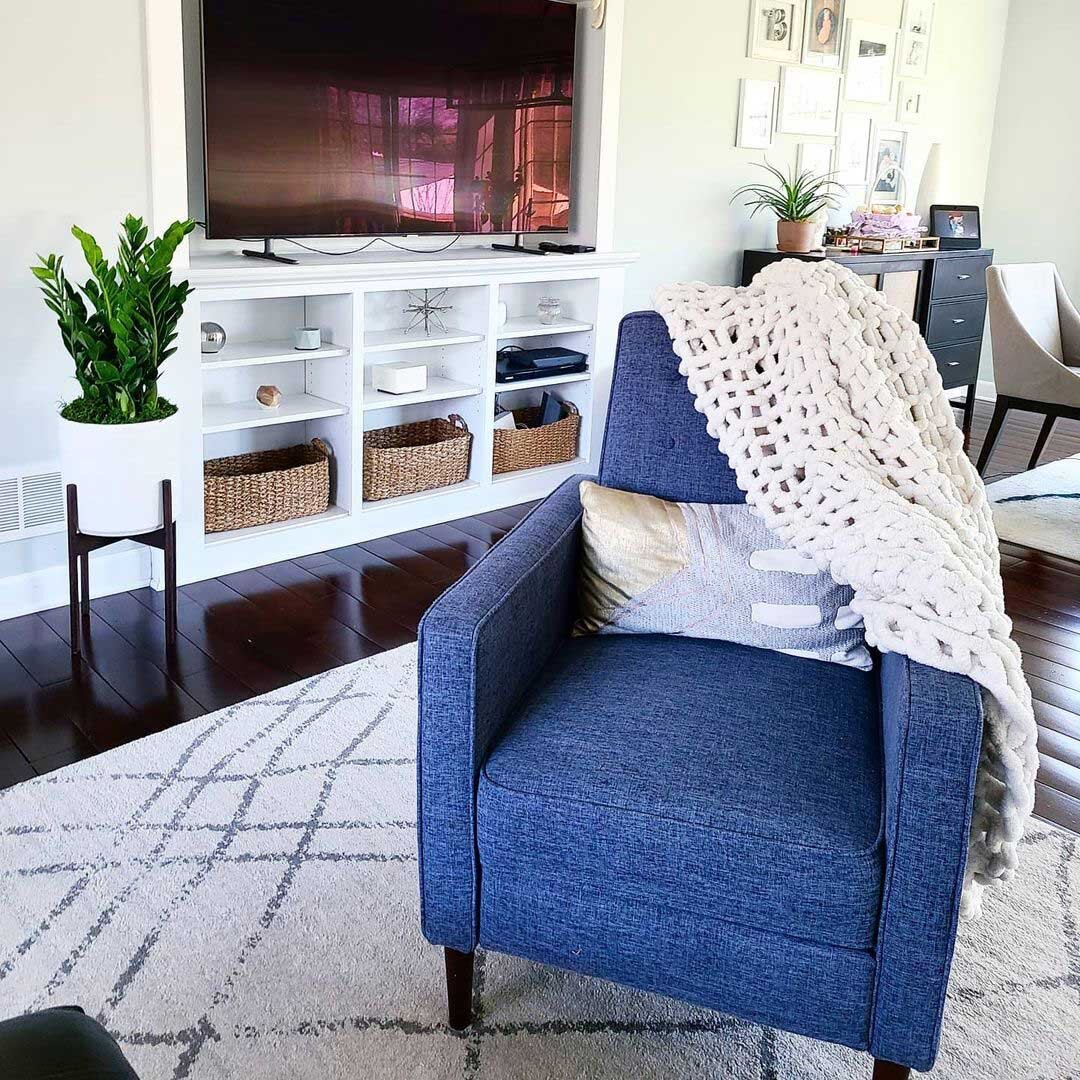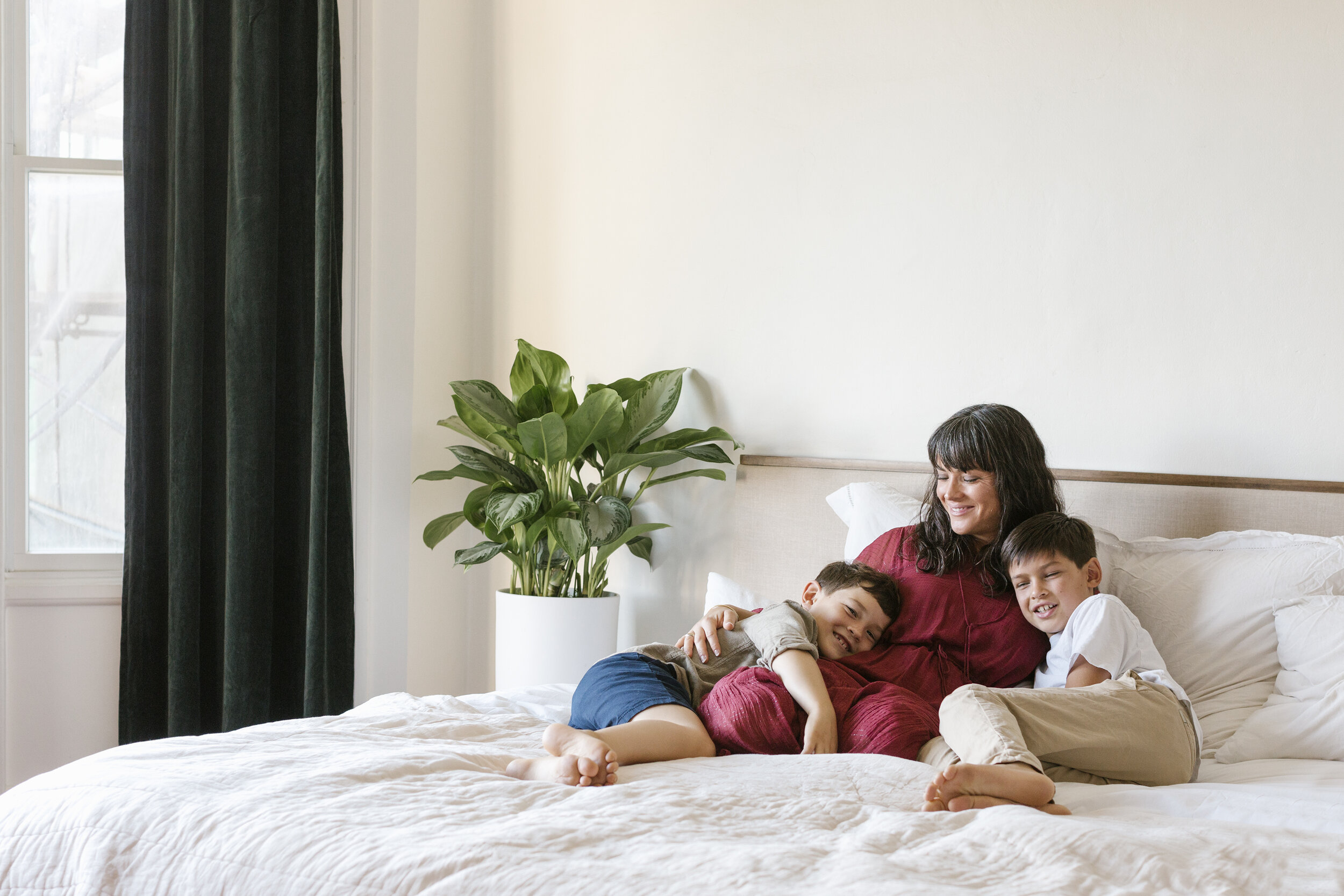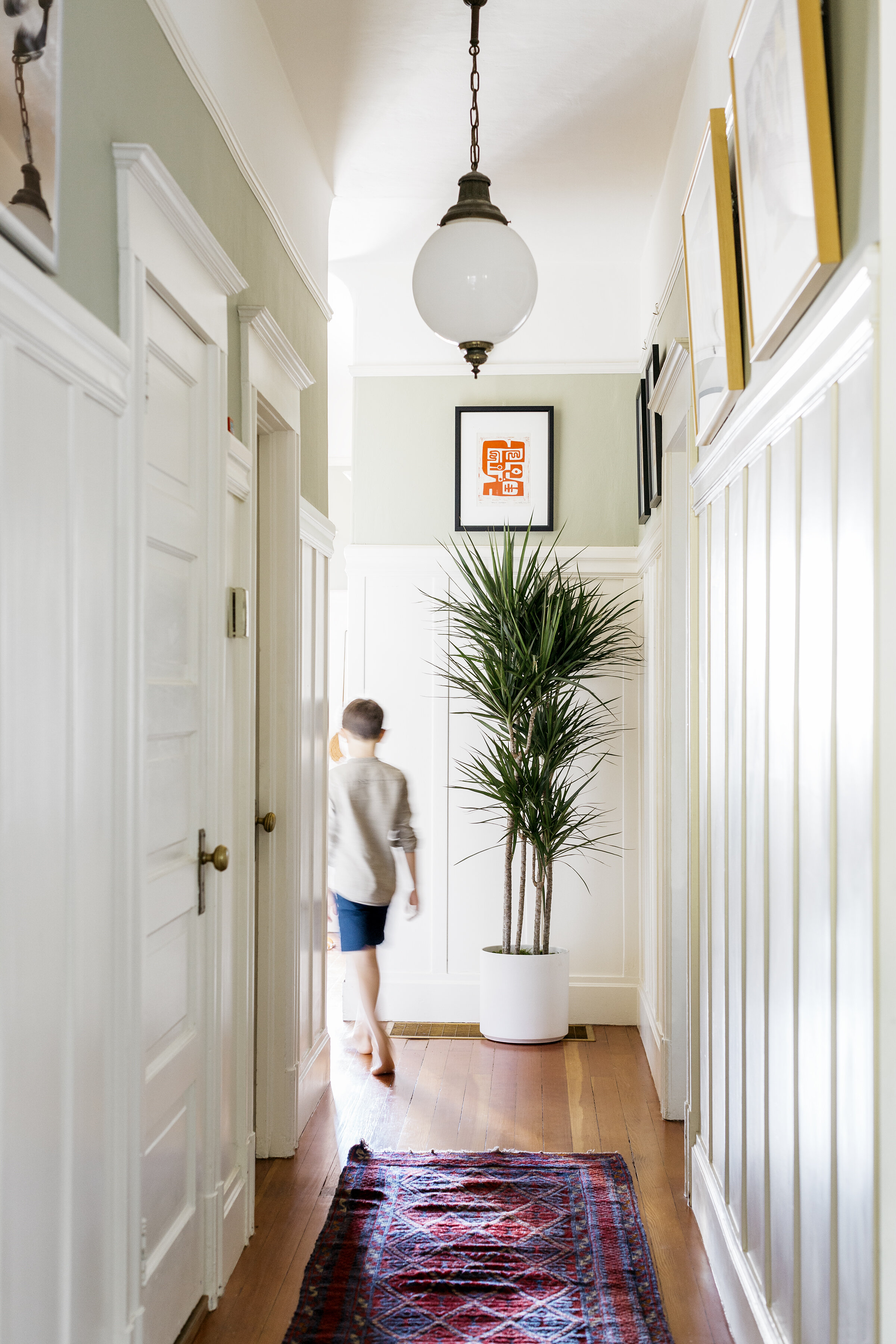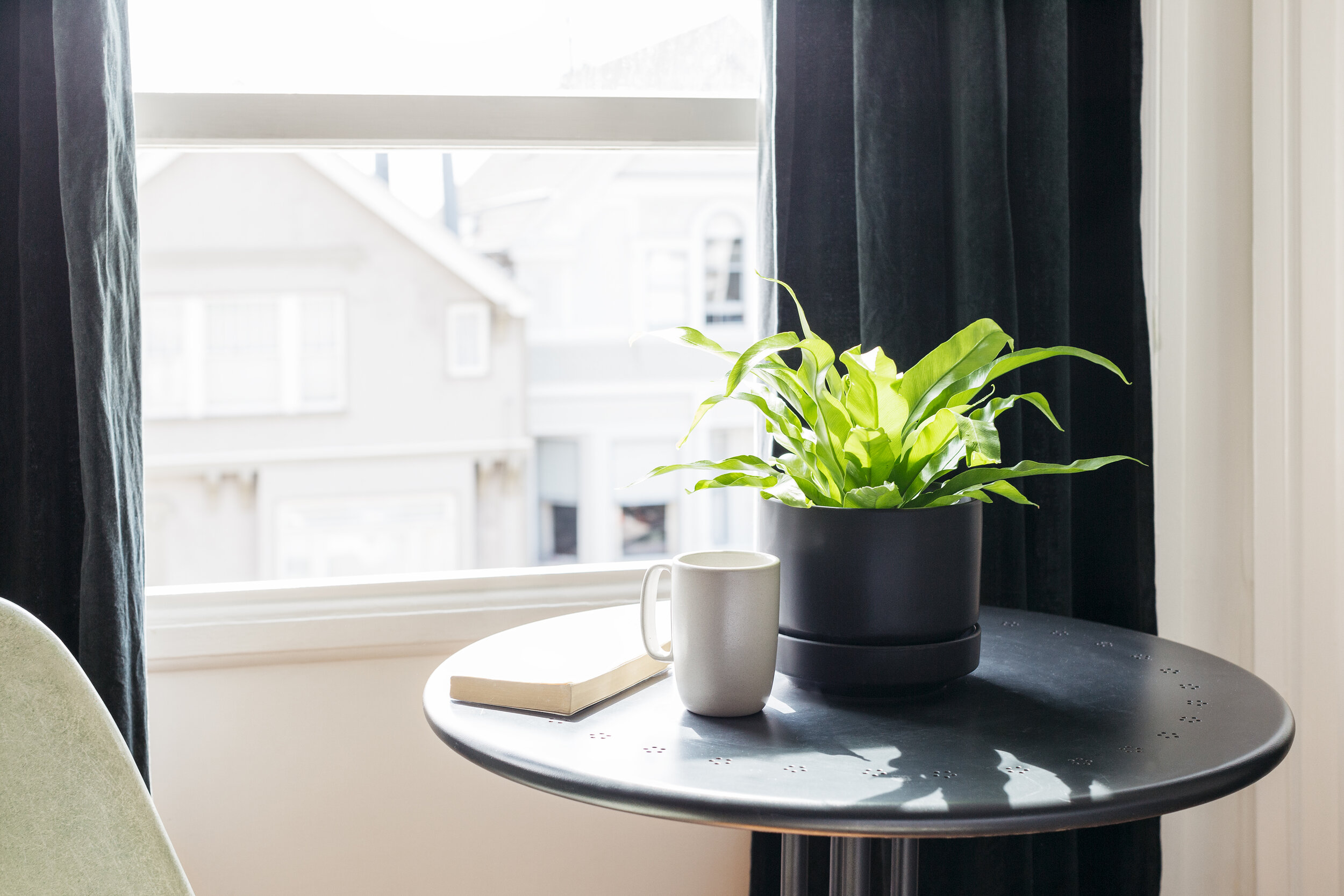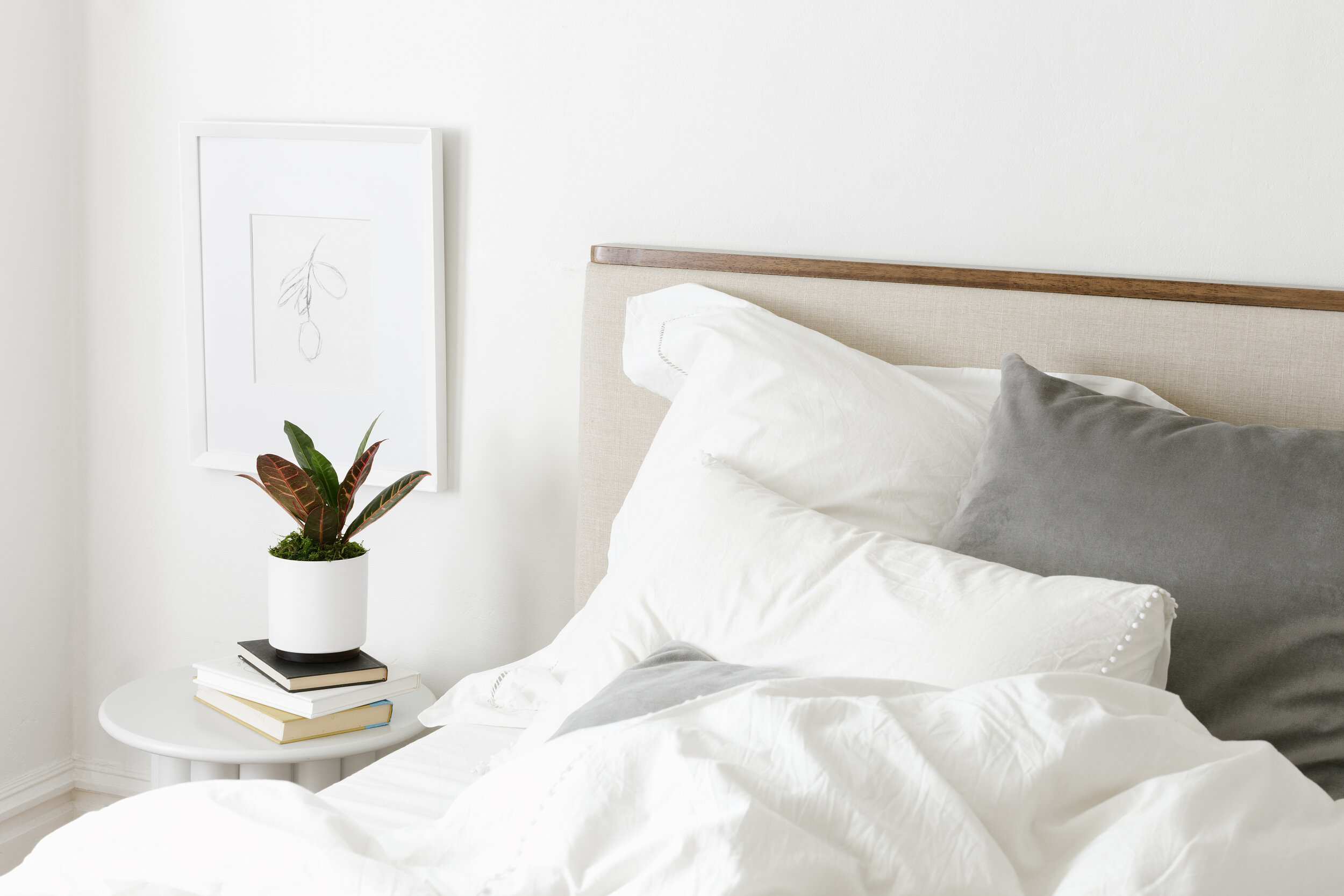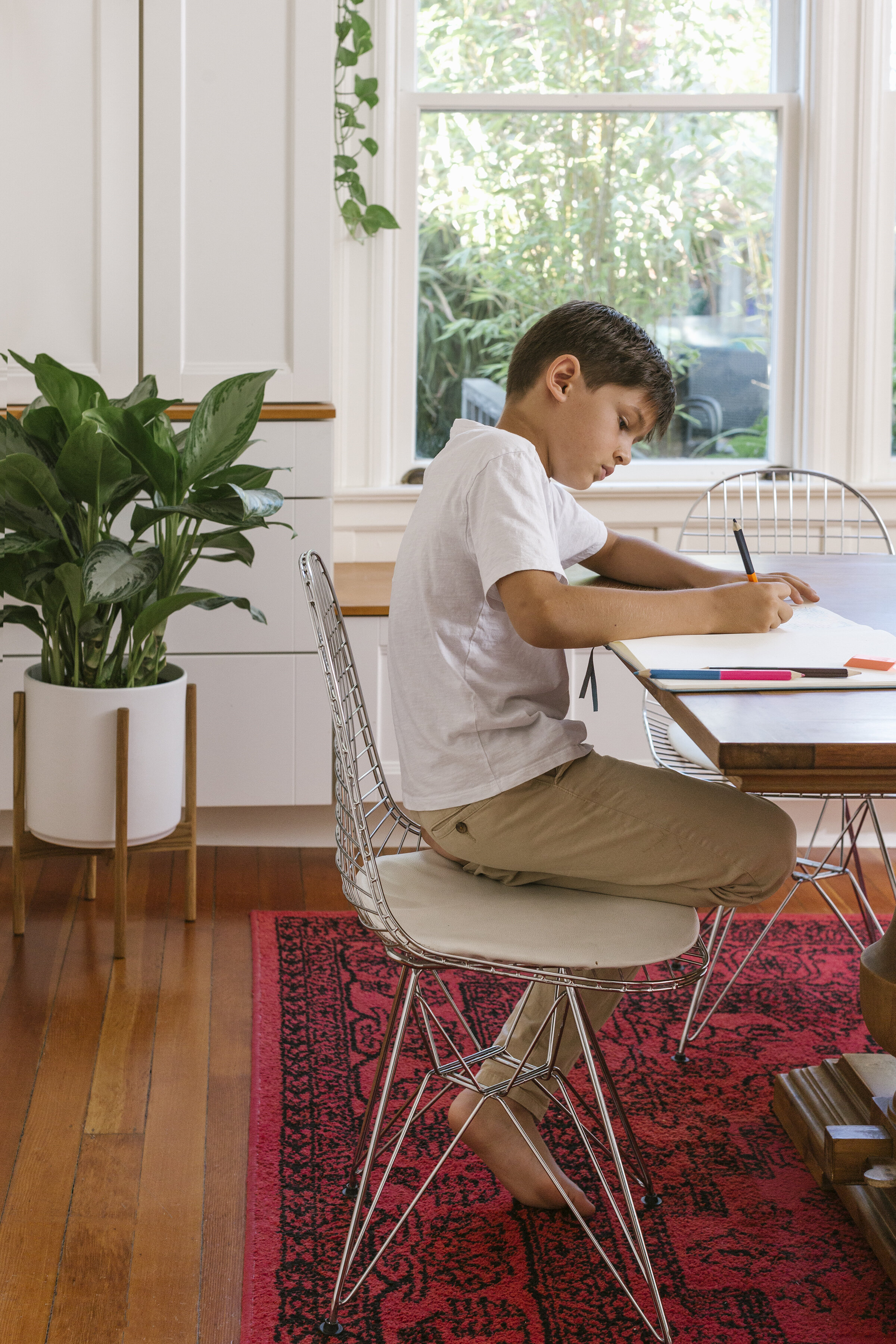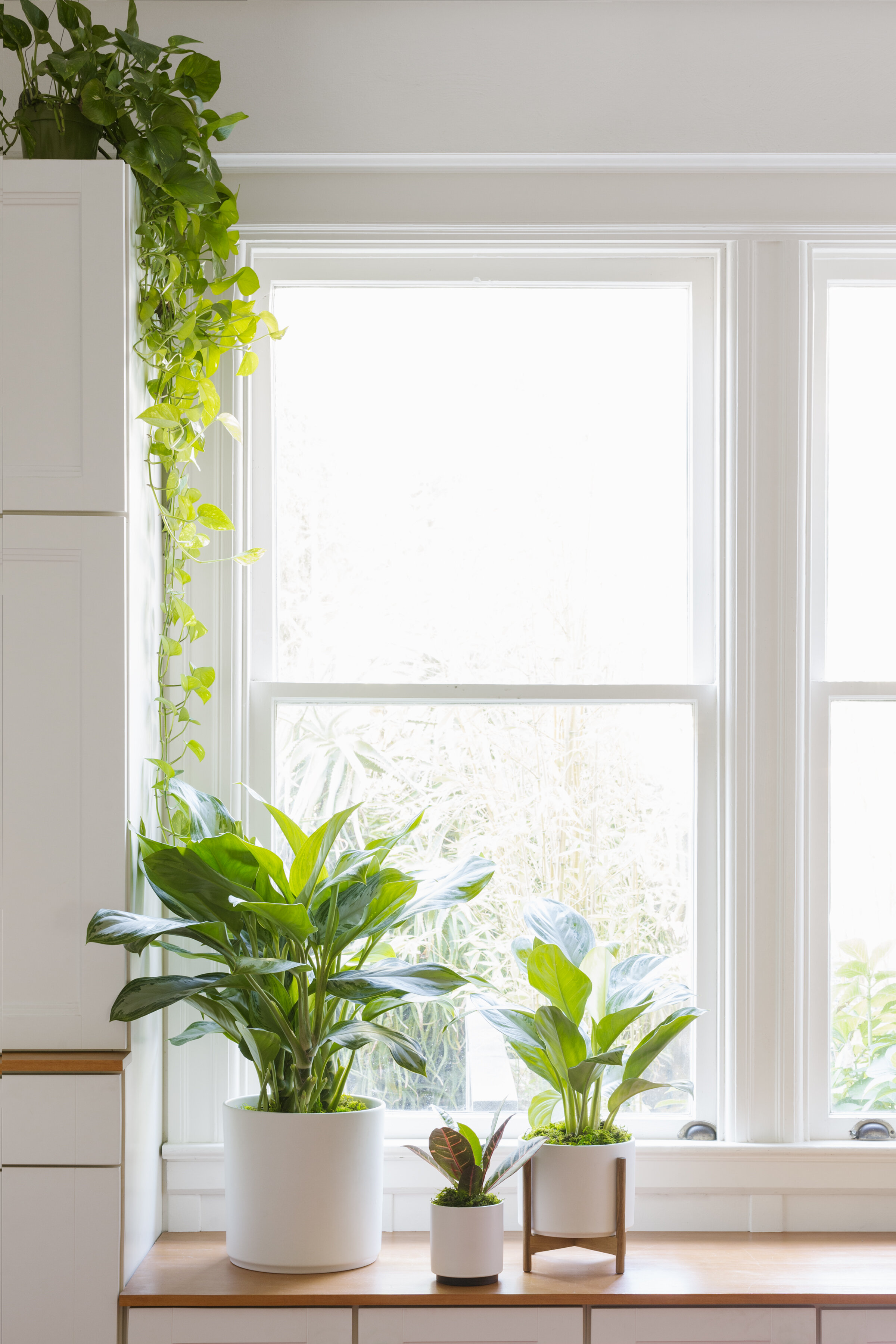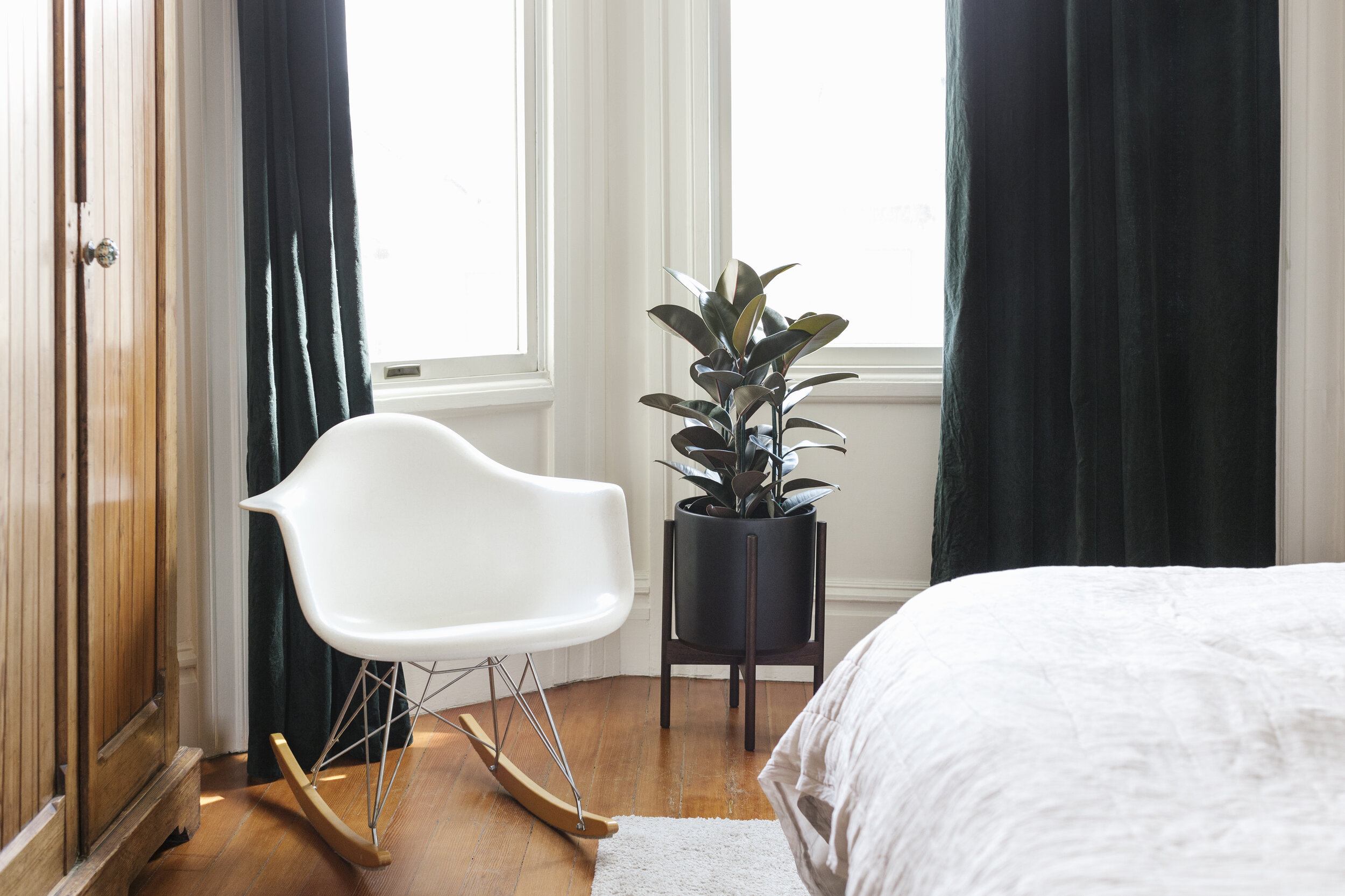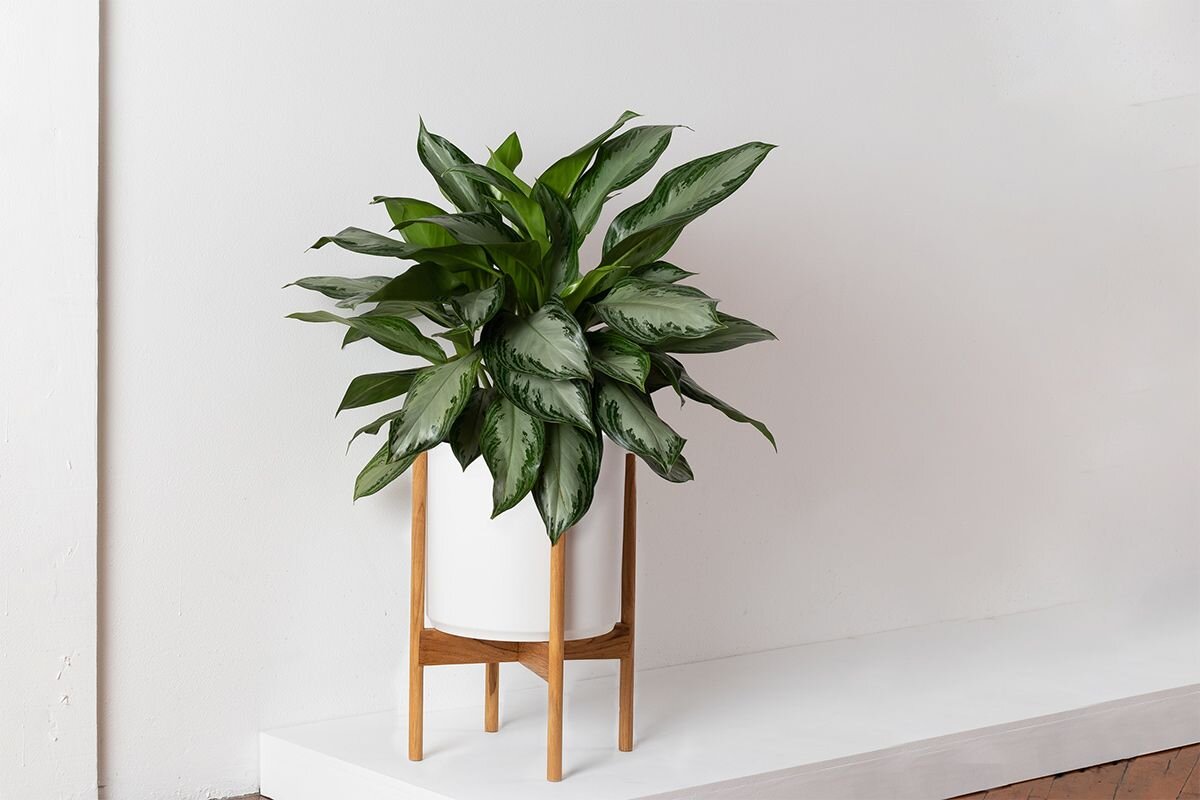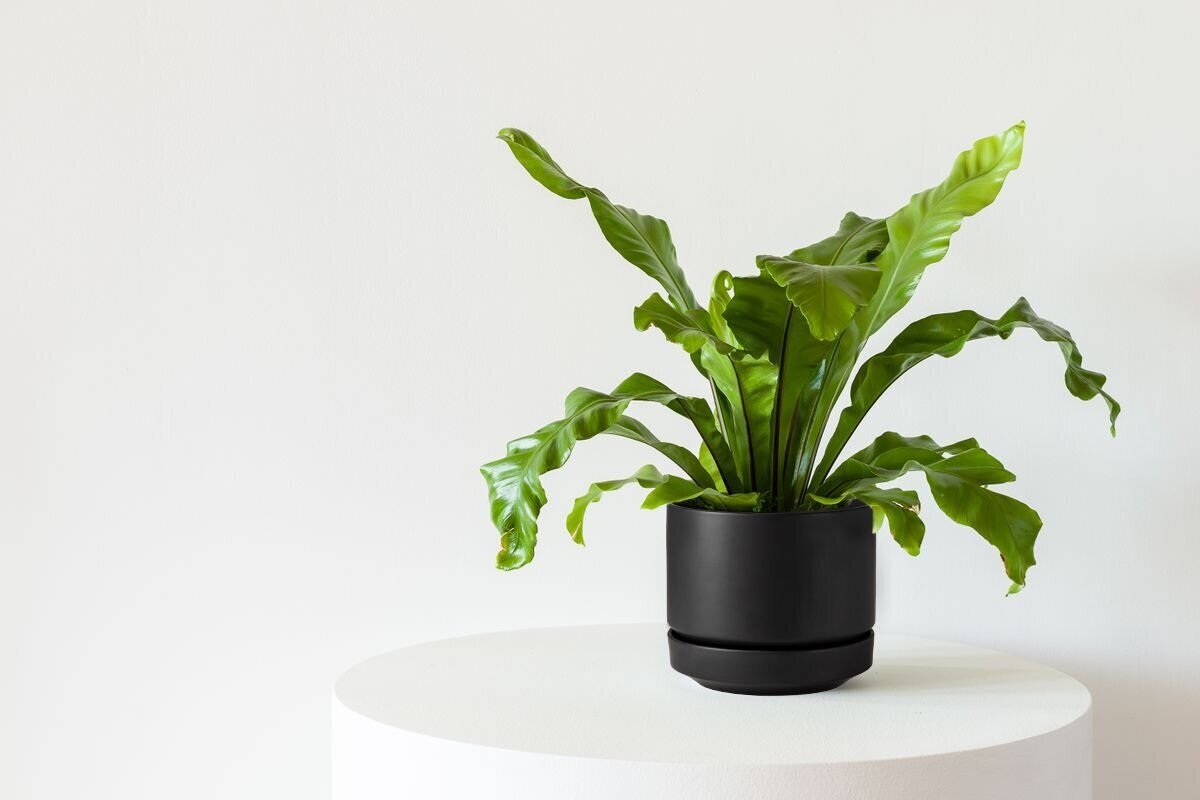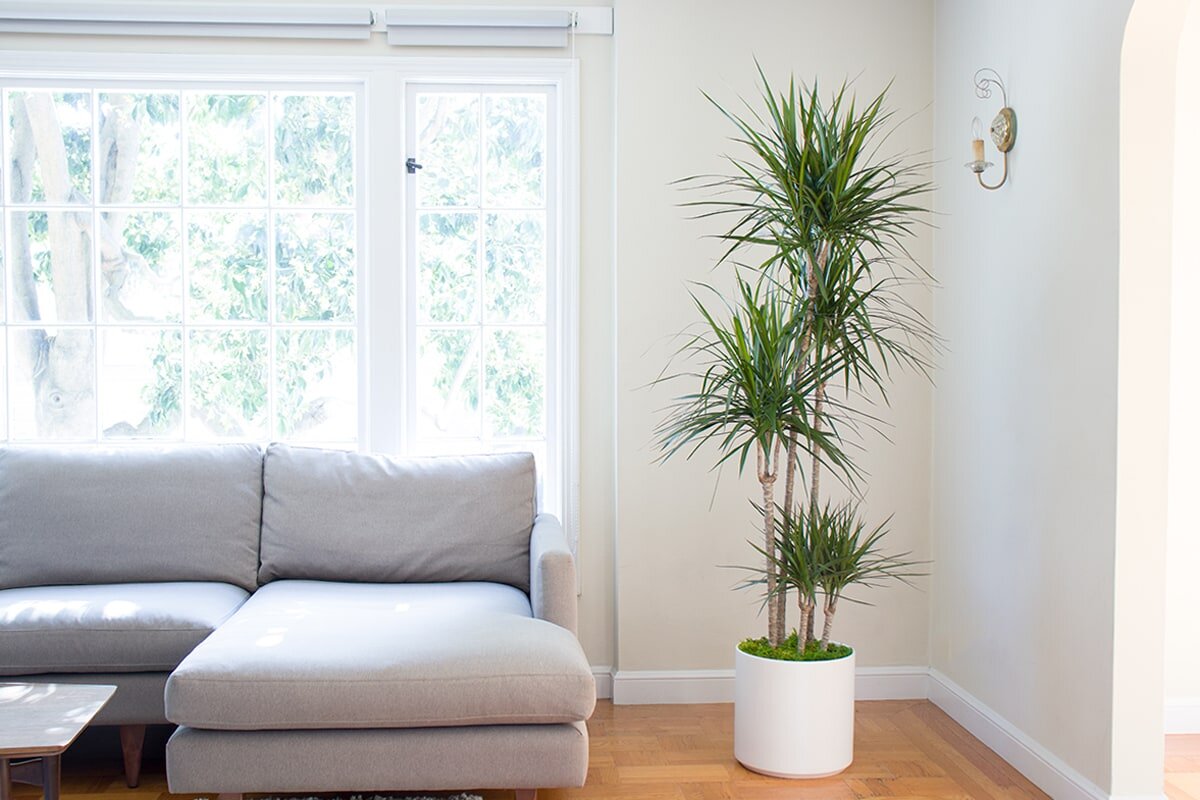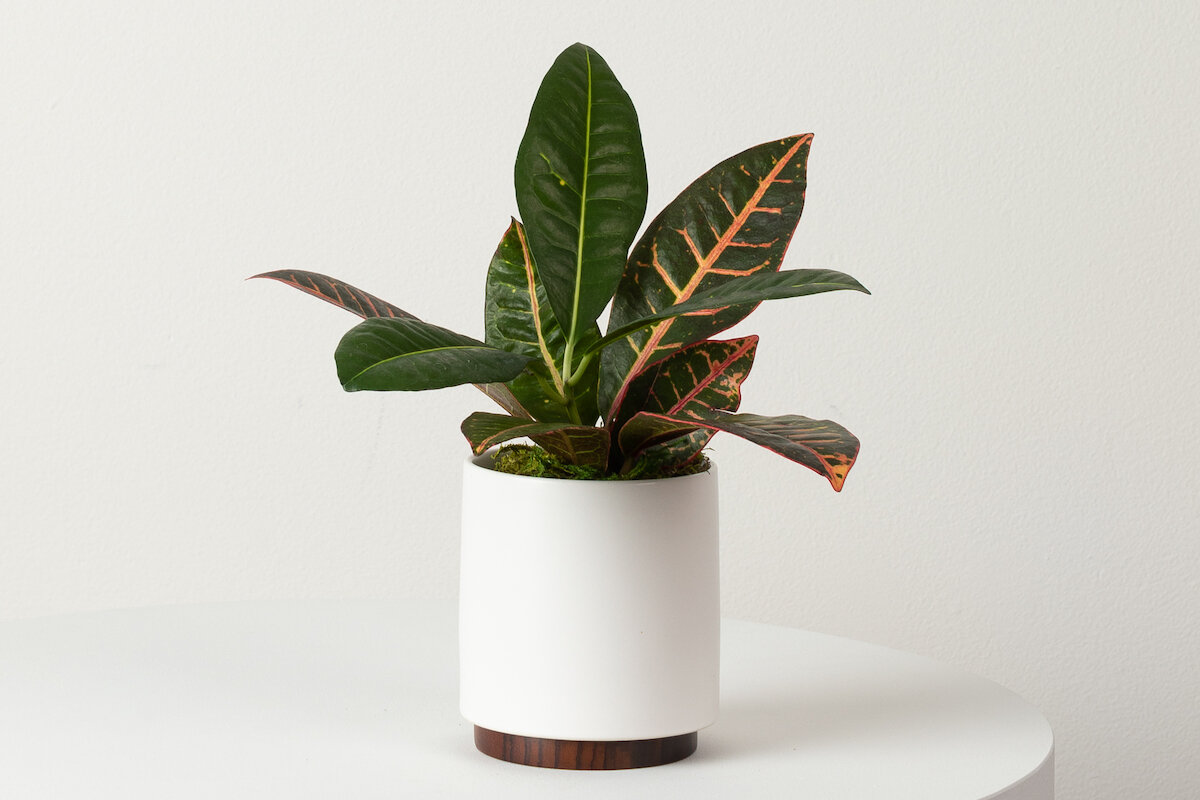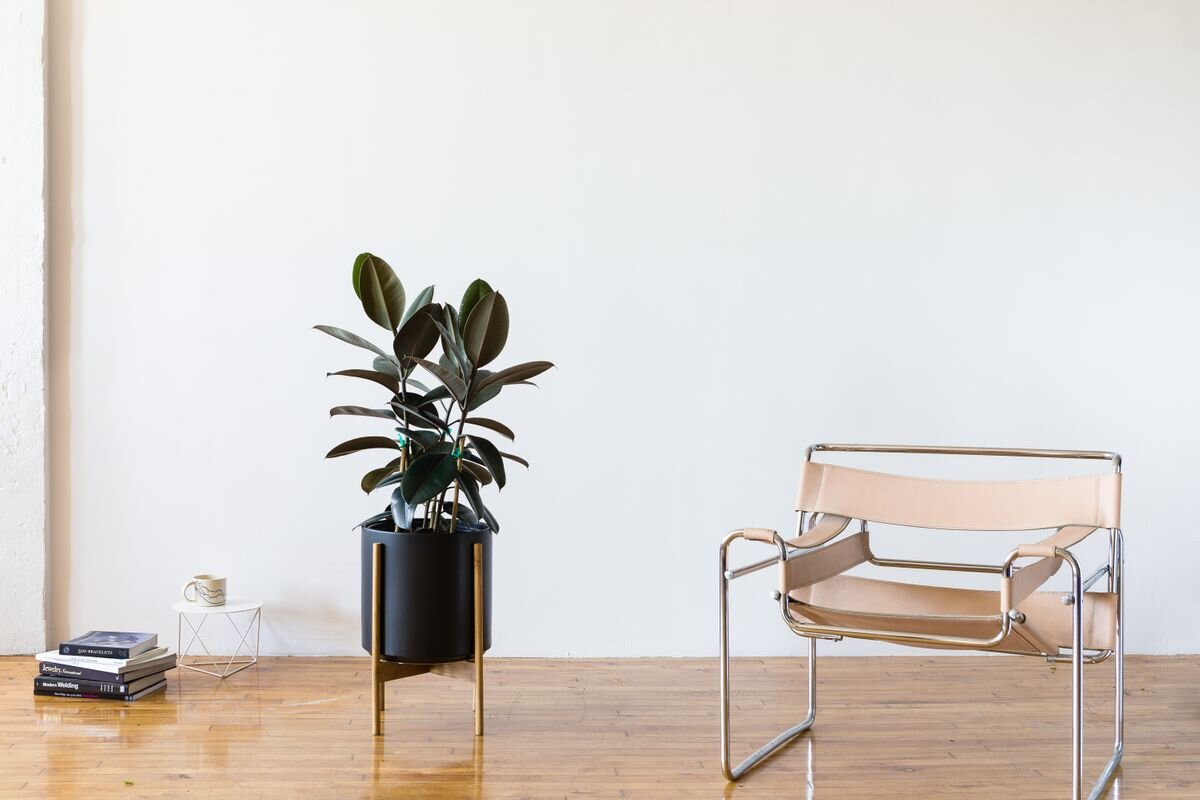In our Dear Plant Stylist series, we share styling and lighting inquiries received by our in-house stylists with our audience. So read on-- you just might find that your plant styling questions are answered below!
—
Dear Plant Stylist,
I’ve heard that plants like to be arranged in groups, but I don’t know which look best together. Also, do they need to have the same care instructions?
Thanks,
V.F.
Dear V.,
You heard it right. Plants do benefit from being situated in groupings together. But your second question is very astute— it’s important that the plants you choose for your grouping have the same requirements for light. It’s helpful, as well, if they have the same requirements for watering, because that mitigates the chance of over or under watering one as you attend to its friend with different needs.
The Snake Plant and Golden Petra make an adorable couple at this workspace.
So why do plants benefit from being grouped together? Apart from looking great, one reason is because plants release moisture into the air around them. When grouped together, they create a mini micro-climate of boosted humidity, which almost all houseplants, especially tropical ones, love.
In terms of aesthetics, I don’t think you can really go wrong with plant pairing. Grouping plants is all about maximizing the beauty of the plants’ textures through contrasting and mirroring, and different foliage types and coloration look lovely together. So it’s best to approach this from the more pragmatic lens of plant care requirements, as that is the part that’s really key to a successful plant grouping.
Low to Medium Light Plants
If you’re creating a grouping for an area that receives low to medium light, you have a wealth of options. Consider grouping Zanzibar Gems with Snake Plants. Both are exceptionally flexible in regard to light, and both like for their soil to dry out entirely before being watered. Parlor Palms are an ideal accent for these large plants, and prefer low light and to be watered only when dry.
Medium to Bright Light Plants
The Lady Palm, Monstera Deliciosa, and Tineke Rubber Plant making a bright and enviable corner in this living room.
This is the moment for Monsteras! One of the most iconic houseplants, with foliage that is immediately recognizable and inarguably fun, Monsteras love to be situated by friends. Monsteras enjoy medium to bright light, and like to dry out entirely between waterings, so they’re a perfect pair for the beloved Braided Money Tree and Rubber Plant. These gorgeous, glossy-leaved plants are renowned for their gleam and lush, jungle aesthetic. And you can choose your preferred coloration: the classic, emerald and burgundy Rubber Plant, the gently variegated Tineke Rubber Plant, or the rosy pastel Pink Rubber Plant. Pileas are also a wonderful option for a small accent plant, with their preference for bright light. They should also be watered only when their topsoil is dry.
Pet Safe Groupings
If you need a jungle for your little jaguar or a curious dog friend, don’t fret! It’s totally doable. Consider pairing a Parlor Palm with a Braided Money Tree and a large and lovely Cast Iron Plant. Tailor the light of this grouping to the Cast Iron Plant. Parlor Palms prefer low light and Braided Money Trees are wonderfully adaptable, but Cast Irons require low light and must be kept from direct sun. All three plants can thrive in a shady spot.
Pet Safe plant duo
Create an indoor jungle for yourself…and the one you couldn’t live without. Flora and fauna will live beautifully together with a set of two plants that are non-toxic, low-light adaptable, and bright in both color and style.
Arrange!
Arranging plants in groups is incredibly fun. You can explore varied pot and wood stand colors, incorporate baskets or macrame, and create a wonderfully textured microbiome that plants crave. Remember that if any of your plants should experience pests, you’ll need to separate the affected plant from the grouping while you treat it, so that the pests don’t spread.
And that’s that— you can enjoy the practice of liberally misting your grouping, and all of our plants (with the exception the Fiddle Leaf Fig, which prefers special plant food) will benefit from the same gentle houseplant fertilizers. Enjoy the journey and send photos! We would love to see your creation. Now, get grouping!
Easy Care Plants, Delivered
Beautifully potted plants, plus lifetime plant care support. Order online at leonandgeorge.com




